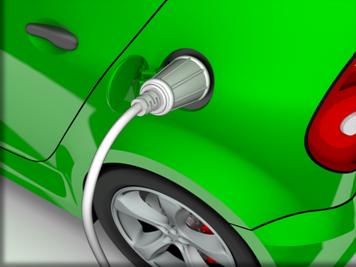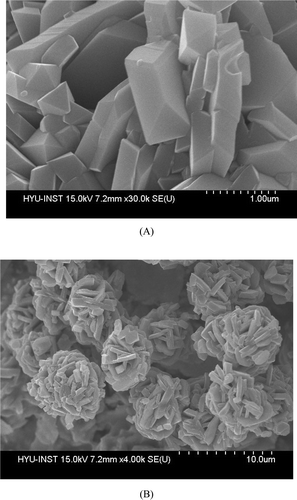Feb
25
Is The Battery for Electric Vehicles Really Ready?
February 25, 2011 | 7 Comments
Trend Tracker, an automotive research company based in Wiltshire, England says car manufacturers’ expensive scramble to produce electric cars with limited ability would be better spent on long-term research to produce electric cars good enough to compete with regular ones.
The key in that is compete – after the early adopters are sold, the rest of us, the mass market has to be sold. There’s a long way to go on that.
Battery only cars aren’t able to meet range and cost demands that would make them popular among buyers without government subsidy, and fuel cells still fail to beat the cost barriers. That leaves a variety of combustion hybrid charging sets until battery capacity and recharge rate times are competitive.
The Nissan Leaf, the first of the new EV or battery-only cars, is on sale now. Range: a claimed 100 miles. The Chevrolet Volt range-extended hybrid electric vehicle is also in showrooms. Range with gas engine backup: at least 350 miles. Toyota’s Prius gas-electric plug-in hybrid will appear next year. Range: about the same. Initial cost: very high.
There are two significant problems. Battery prices need to be shaved at least in half and range needs to be improved by at least 100 percent. Then the problem of battery depreciation rolls in – batteries are unlikely to last much more than eight years, which will destroy the trade in value of the first electric vehicles. It’s a “wait a minute” time for prognosticators.
All that is not to say that pure EV has a place in close up, urban, and short distance use. But very few people can justify the investment in another vehicle for only short range. Hybrids could work, but the emphasis has to go to the series hybrid with less battery and far more combustion efficiency to the wheels.
Scientists Yang-Kook Sun and Ki-Soo Lee at World Class University, Department of Energy Engineering, Hanyang University in South Korea and Bruno Scrosati at the Department of Chemistry, University of Rome in Italy are reporting development of an advanced lithium-ion battery that is ideal for powering the electric vehicles now making their way into dealer showrooms. The new battery can store large amounts of energy in a small space and has a high rate capacity, meaning it can provide current even in extreme temperatures.
The paper appears in the Journal of the American Chemical Society.
The scientists developed a high capacity, nanostructured, tin-carbon anode, or positive electrode, and a high-voltage, lithium-ion cathode, the negative electrode. When the two parts are put together, the result is a high-performance battery with a high energy density and rate capacity. “On the basis of the performance demonstrated here, this battery is a top candidate for powering sustainable vehicles,” the researchers say.
The team has shown on the anode side that the “volume stress issue can be efficiently solved by developing suitable electrode morphologies, such as M−C nanocomposites. They’ve demonstrated that a Sn−C composite may operate in lithium cells with several hundred cycles, without capacity decay and with discharge (lithium-alloying)−charge (lithium dealloying) efficiency approaching 100%.” Now if that can get to market the battery depreciation matter would be minimized significantly.
The Sn−C electrode has been also upgraded in terms of charge discharge rate capability. Improvement in the morphology, i.e., assuring a uniform distribution of the nanometric tin particles in the amorphous carbon matrix and avoiding any aggregation, allowed the electrode to operate under high current rates. That could be a great help for those long charge times.
On the cathode side the team is doping LiMn2O4 spinels with Ni and Co and, at the same time, by preparing the resulting Li[Ni0.45Co0.1Mn1.45]O4 cathode with particles at micrometric size (in order to avoid electrolyte decomposition) and using a metal ratio, that is expected to provide high working voltage and high rate capability.
The team’s work is built on material testing. The tests show that the practical working voltage of the battery ranges between 3.9 V and 4.7 V while the specific capacity, related to the cathode mass, is of the order of 125 mAh g−1. In addition, the battery can cycle at 1C with a very stable capacity delivery. Taking an average voltage of 4.2 a top specific energy density value of 500 Wh kg−1 is obtained. Assuming a 1/3 reduction factor associated with the weight of the electrolyte, current collector, and aluminum case in a pouch configuration, the team obtained a 170 Wh kg−1 value that still exceeds that offered by conventional lithium ion batteries chemistry.
So far a lithium ion battery having this unique electrode combination hasn’t been reported. The charge cycles, temperature range and capacity are going to help. The design deserves some prototype and real world testing.
Is this kind of progress going to be enough? Its clear most everyone is going to want to bail on even cars with good fuel consumption numbers as oil prices swing ever higher over the coming years.
The Stone Age didn’t run out of stone, the Bronze Age out of copper or zinc, the Iron Age out of iron and the Oil Age won’t run out of oil. All of these ages ended from better choices, something more competitive. There’s energy a plenty, handy and cheaply stored energy in a fuel or an electron store that not cheap at all. The question will be when the fuel vs. electron storage exchange economic places.
We will each get to decide with our money if the battery above or the ones to come are good enough. The price of oil will determine when we have to choose. Batteries are getting closer, but are they close enough yet?
Comments
7 Comments so far





Nanotechnology could massively increase the surface area of batteries and cathodes. But, right now the costs for a battery would be astronomical.
[…] charge times, replacement costs and the effect on trade in value. … See original here: Is The Battery for Electric Vehicles Really Ready? | New Energy … ← BMW i Electric Vehicle Sub-brand, BMW i3 and i8 Intro Video Rolls-Royce will reveal […]
All of these nitwits, including Obama and his crew, got caught up in the rah! rah! gee-whiz! futurism of “the electric car” and forgot (or more likely never knew) that battery technology is nowhere near the sophistication or economy to meet the challenge.
The same dimwits are backing big wind power although the effect of big wind farms is the same as throwing hand grenades into control rooms of power grids.
Batteries may work eventually for small vehicles close to home in warm weather.
By far best technology today is GreenNH3 It can move all cars and big trucks and planes and the price is down to 30 cents a liter. see GreenGas.cc Re money. They need someone to invest or that knows how to gather up investors,
Electric cars run on COAL – when they are not running on OIL.
And coal is a very plentiful supply of energy. So, lets use it!
Is The Battery For Electric Vehicles Really Ready…
…